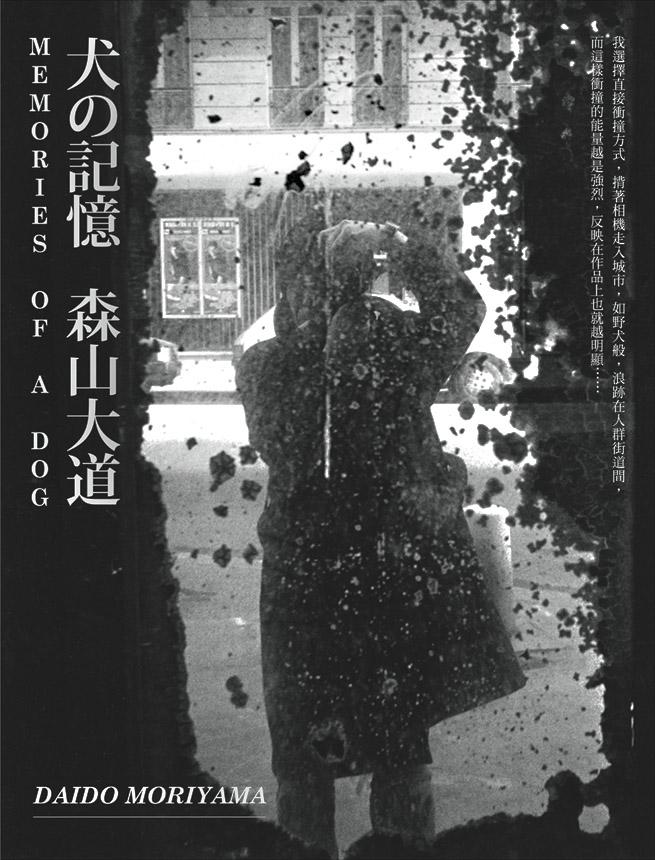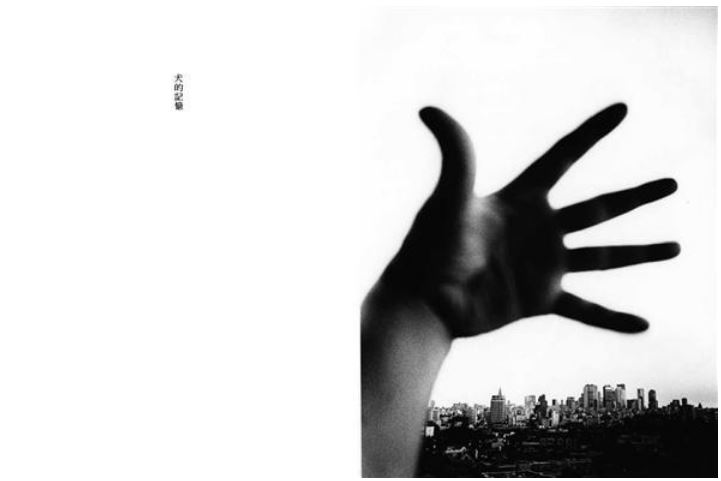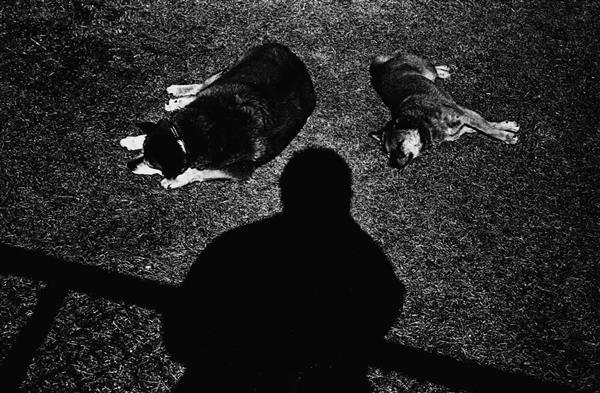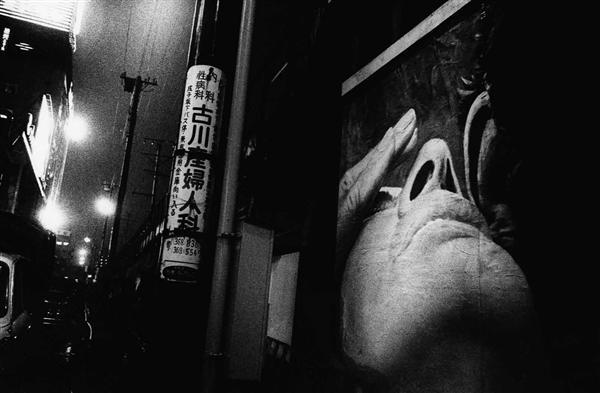
▲Japanese Photography Master—Moriyama Daido’s First Chinese Autobiographic Piece
G!VOICE Recommend
“High contrast, rough particle, vague, jumpy, and out-of-focused strong black and white photography has been the first impression the public have for Moriyama Daido’s work. This autobiographic content details his growing environment, sentiments, and his anti-routine, anti-stereotypical personality. This work depicts how he perceives the world, be it gloom and doom or free and unstrained. Through the text, we get to know the artist more, understand the most truthful definition of photography and his process of doing this.”
“The passing time does not extinct, but awaits there. I see memory as a medium and continue to travel. Perhaps because of this reason, I drag out recollection and sentiment and get ready for the moment of awakening. Photography serves more than documenting things but creating memories. It is a historical process of a series of memories and the fossil of time, myth of light and shadow. To me, photography does not observe from the sideline, or simply seek to create a magnificent artwork, but through personal experience to discover fragments that connect with your life which you seek to encounter spiritually. However, sometimes in between the crevice of retrospection and presenting self-will to time, I feel that awkward dilemma.”—Moriyama Daido
Bonus Recommendation: Documentary DVD
日本當代藝術大師: 森山大道 ≒Near Equal Moriyama Daidou
http://www.eslite.com/product.aspx?pgid=1004175982110034
Introduction
“I chose to crash. I carried the camera into the city, like a wild dog, walking astray among humans. The stronger the energy of clashing, the more obvious it reflects upon my work.” –Moriyama Daido
Japanese photography master, Moriyama Daido’s first Chinese photography work.
Memory of a Dog is the first of the legendary photography work in the 80s, Wild Dog Trilogy and the essential text to gain understanding of Daido and his work.
Reprinted in Japanese in 2001; English hardbound cover published in 2004 and Chinese version first published in 2009.
Raw and primal, strong black and white style, nakedly documented life-scape in the city.
The youth, sentiment and vigor captured in the photos show the inner resilient life force.
The photos catch like wild fire, touch every urban dweller’s heart.

Daido called himself a wild dog. He completed the trilogy, Memory of a Dog, Time of a Dog and Memory of a Dog-Finale, which is considered the essential reading for entering into this master’s world. Among which, Memory of a Dog took the most spotlight. It was first published in 1982, reprinted dozen times from 2001 to date and in 2004, the English hardcover edition was published.
“Photography serves more than documenting things but creating memories. It is a historical process of a series of memories and the fossil of time, myth of light and shadow.” –Moriyama Daido.
Daido rejected rote education by dropping out of high school. He stressed that the streets are his schools where he learned how to photograph. He sharp black and white style pictures often depict desolate urban corners to represent the contradictory sentiment that city dwellers’ are cold and lonely but desire to build connection with one another. His work is contagious, deeply moved every urbane. He was crowned as the master of street photography. His works convey youth sentiment and vigor and reflect the inner resilient life force of people. He is widely adored and followed by youth across Japan and the rest of the world.
“When I came to this world and started living my life, I didn’t know the ‘I’ I was supposed to be. I had zero confidence. I gradually awoke the self-awareness of ‘I’ as an individual. Not long ago, my 5th and 6th senses finally started to function. I started activating my sub-consciousness, having connections between my memories and various things around me. It was then I started to retrospect my so-called ‘personal history’.”
“In 1971 I began taking photos of stray dogs in Aomori. When I walked to the street from my hotel, a dog passed by before me. I took a picture of it. And from that moment on, that stray dog followed me in my heart. This picture created a lasting impression in people’s hearts. When they think of my work, they think of this picture.” –Moriyama Daido

Memory of a Dog is both a picture that touches many and a personal memory of Daido, who compares himself to a wild dog. There are twenty meaningful articles in the book in which Daido shared his life experiences: his life, work, family, friends, emotions, his journey in cities and country sides. Daido searches in his memories, lurks around in images and digs out the memories and reality overlapped in images through words and the significance they brought.
These words fit perfectly with the poetic black and white pictures he took. In fact, reading Daido’s text can make one feels his inner resilient life force. His unembellished phrases nakedly represent his acute observation of urban corners, an energy rose above the mass. Like he puts it, “I chose to crash. I carried the camera into the city, like a wild dog, walking astray among humans. The stronger the energy of clashing, the more obvious it reflects upon my work”.

——Extract from books.com.tw
About Author
Moriyama Daido
Born in Osaka, 1938, Moriyama Daido was an ordinary graphic designer. One day he saw William Klein’s famous piece, New York and got inspired and decided to go to Tokyo in 1961. He worked as an assistant to Eikoh Hosoe and left 3 years after to pursue individual career.
He published his first photography, Japan: A Photo Theater in 1968, which marked his strong artistic style. In 1969, he peaked in Provke magazine with his stylized features: vague, shaky, high contrast, rough particle elements which created a copy craze in Japanese advertising field.
In the 70s, Daido entered into a period of self-organization. His works conveyed a sense of frustration, desolation and gloom. Even the full blossom of cherry flowers appeared to be obscure and withered under his camera shot. Some critics even suspected he might be suicidal. To shake off the shadow, Daido made his way to New York and sojourned there under the invitation of Japanese design maestro, Tadanori Yokoo.
In the 80s, Daido gradually rose above the mire and published Light & Shadow (this legendary masterpiece was reprinted in April, 2009). This work shows Daido’s clear-cut views on things again which impressed critics in Japan. The media threw headlines such as “Moriyama Daido is finally back!”
Starting in the 90s, he has been busied hosting solo and group exhibitions in Japan and overseas. In 1999, his work was exhibited in Modern Museum in San Francisco and Metropolitan Museum in New York; In 2002, solo exhibition in London and New York; In 2003, retrospective exhibition hosted by foundation Cartier pour L’art Contemporain in France; in 2004-2009, solo exhibition Koln, Amsterdam and Oslo. In Japan, he already held nearly 10 exhibitions in recent year.
He has published dozens of photography works and prose, including Tale of Tono, Shinjuku, Osaska, A Dialogue with Photography, Snap, Another Country, Shinjuku Plus etc. On average he publishes around 2-3 works a year in Japan (including reprint).
—–Extract from books.com.tw
